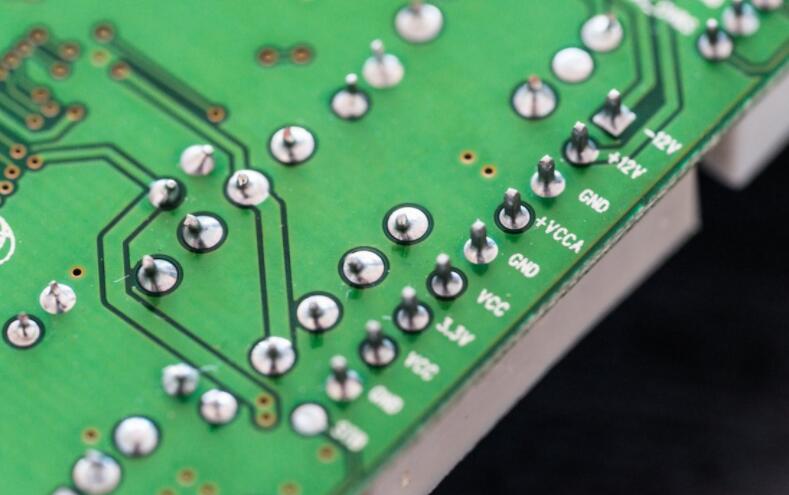Detailed explanation of PCB design and EMI switching frequency: Up to now, engineers have focused on how to make the module smaller and lighter. In fact, everyone knows that the power density of the product can be improved by increasing the switching frequency. But why hasn't the volume of the module changed much so far? What limits the increase in switching frequency?
Switching power supply products are driven by market applications and increasingly require small, lightweight, high-efficiency, low-radiation, and low-cost characteristics to meet various electronic terminal equipment. In order to meet the portability of current electronic terminal equipment, the switching power supply must be small and small. Because of its light weight, improving the operating frequency of switching power supplies has become an issue of increasing concern to designers. However, what are the factors restricting the increase in switching power supply frequency? In fact, it mainly includes three aspects, switch tube, transformer, EMI and PCB design.
1. Switch tube and switching frequency
The switching tube is the core device of the switching power supply module, and its switching speed and switching loss directly affect the limit of the switching frequency. The following is a general analysis for everyone.
1. Switching speed

The loss of MOS tube is composed of switching loss and driving loss, as shown in Figure 1: Turn-on delay time td(on), rise time tr, turn-off delay time td(off), fall time tf.
For this MOS tube, its limit switching frequency is: fs=1/(td(on)+tr+td(off)+tf) Hz=1/(8ns+91ns+38ns+32ns) =5.9MHz, in actual In the design, because the duty cycle of the switch is controlled to achieve voltage regulation, the turn-on and cut-off of the switch tube cannot be completed instantaneously, that is, the actual limit switching frequency of the switch is much less than 5.9MHz, so the switching speed of the switch tube itself limits the increase in the switching frequency .
2. Switching loss
When the switching tube is turned on and off every time, the VDS voltage of the switching tube and the current ID flowing through the switching tube overlap for the time (yellow shaded position in the figure), resulting in loss P1, then the total loss PS in the working state of the switching frequency fs =P1 *fs, that is, when the switching frequency increases, the more times the switch is turned on and off, the greater the loss.
2. Transformer core loss and switching frequency
The iron loss of the transformer is mainly caused by the eddy current loss of the transformer.
When a high-frequency current is applied to the coil, a changing magnetic field is generated inside and outside the conductor perpendicular to the direction of the current (1-2-3 and 4-5-6 in the figure). According to the law of electromagnetic induction, the changing magnetic field will generate an induced electromotive force inside the conductor. This electromotive force generates eddy currents (a-b-c-a and d-e-f-d) throughout the length of the conductor (L face and N face)., The main current and eddy current strengthen on the surface of the conductor, and the current tends to the surface. Then, the effective AC cross-sectional area of the wire is reduced, resulting in the increase of the conductor's AC resistance (eddy current loss coefficient) and increased loss. The iron loss of the transformer is proportional to the kf power of the switching frequency, and is also related to the limitation of magnetic temperature. Therefore, as the switching frequency increases, the high-frequency current flowing in the coil produces a serious high-frequency effect, which reduces the conversion of the transformer. Efficiency, leading to an increase in the temperature of the transformer, thereby limiting the increase in the switching frequency.
3. EMI and PCB design and switching frequency
Assuming that the above-mentioned power device losses are solved, a series of engineering problems need to be solved to achieve high frequency, because at high frequency, inductance is no longer the inductance we are familiar with, and the capacitance is not the capacitance we know. All parasitic parameters Corresponding parasitic effects will be generated, which will seriously affect the performance of the power supply, such as parasitic capacitance on the primary and secondary sides of the transformer, transformer leakage inductance, parasitic inductance and parasitic capacitance between PCB wiring, which will cause a series of voltage and current waveform oscillations and EMI problems. The voltage stress of the switch tube is also a test.
Four, summary
To increase the power density of switching power supply products, PCB factories must first consider increasing their switching frequency, which can effectively reduce the volume of transformers, filter inductors, and capacitors, but they are faced with losses caused by switching frequency, which lead to temperature rise and heat dissipation design. Difficult, the increase in frequency will also cause a series of engineering problems such as drive and EMI.